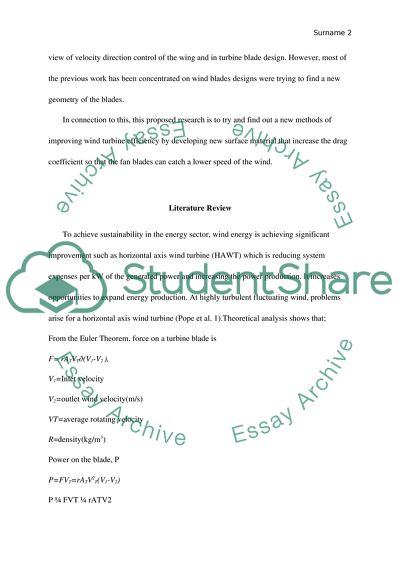Cite this document
(Improving the Efficiency of Wind Turbine Blades Research Proposal Example | Topics and Well Written Essays - 2000 words, n.d.)
Improving the Efficiency of Wind Turbine Blades Research Proposal Example | Topics and Well Written Essays - 2000 words. https://studentshare.org/engineering-and-construction/1836071-research-proposal
Improving the Efficiency of Wind Turbine Blades Research Proposal Example | Topics and Well Written Essays - 2000 words. https://studentshare.org/engineering-and-construction/1836071-research-proposal
(Improving the Efficiency of Wind Turbine Blades Research Proposal Example | Topics and Well Written Essays - 2000 Words)
Improving the Efficiency of Wind Turbine Blades Research Proposal Example | Topics and Well Written Essays - 2000 Words. https://studentshare.org/engineering-and-construction/1836071-research-proposal.
Improving the Efficiency of Wind Turbine Blades Research Proposal Example | Topics and Well Written Essays - 2000 Words. https://studentshare.org/engineering-and-construction/1836071-research-proposal.
“Improving the Efficiency of Wind Turbine Blades Research Proposal Example | Topics and Well Written Essays - 2000 Words”. https://studentshare.org/engineering-and-construction/1836071-research-proposal.


